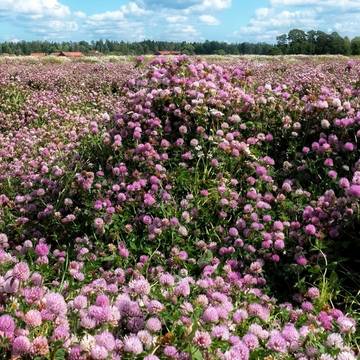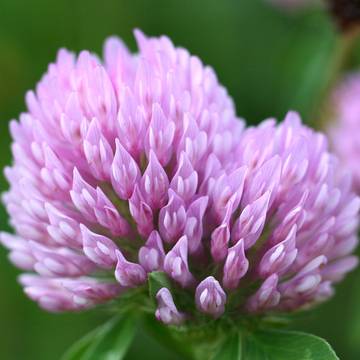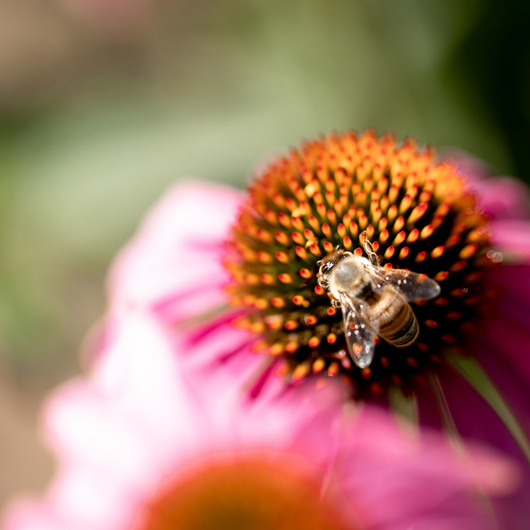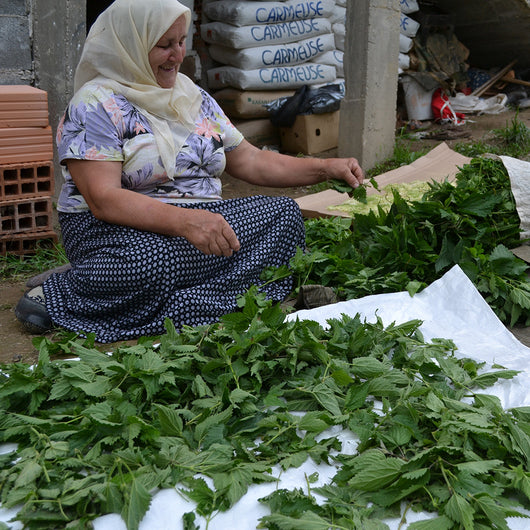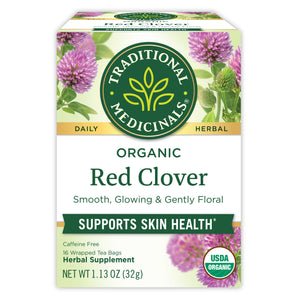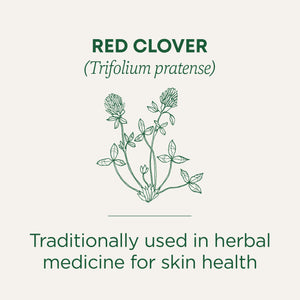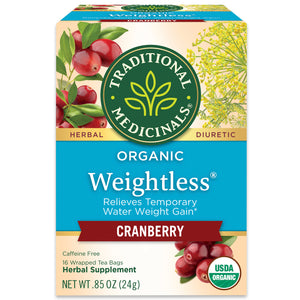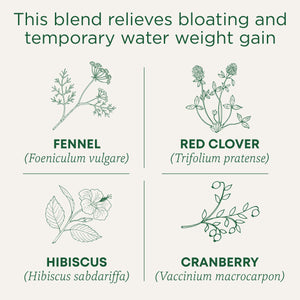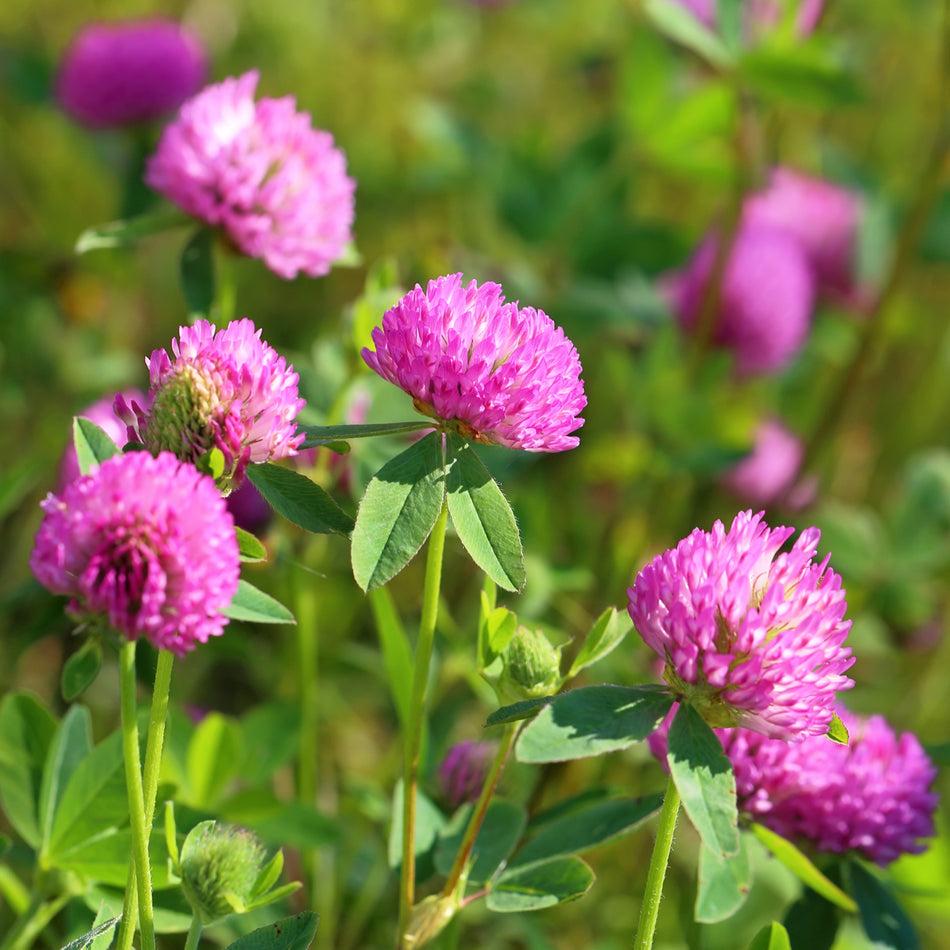
Red Clover
Trifolium pratenseBelieved to be a harbinger of luck, red clover’s benefits extend beyond lore, bringing tangible good fortune as a restorative spring tonic and supporter of skin health.*
The “lucky” herb helping you glow from the inside out.
What are the Benefits of Red Clover?
While red clover has lured many to their knees in search of an elusive four-leaved charm, its rosy flowering top is what has brought good fortune to the health and wellness of many over centuries.
Puffy and pink during full bloom in spring, red clover blossoms are traditionally used to support skin health.* As early herbal practitioners discovered, its benefits are best experienced when harvested and dried then consumed as a tea or herbal tincture as part of a regular skincare routine.
Part of a classification of herbs known as alteratives, red clover traditionally supports the detoxification functions of the liver and lymphatic systems, potentially contributing to its ability to get you glowing from the inside out.*
Beyond skincare, Native American healers have long revered it for its ability to support women’s health. Modern-day herbalists appreciate red clover because of its isoflavone content.
Historically, Chinese and Russian herbal healers have even used it to support respiratory health, while Europeans incorporated it into their formularies for digestive health.*
In traditional Chinese medicine, red clover is believed to help clean the blood, clear heat and remove toxins. Internally, red clover is used to support women during the transition of menopause; as well as for other skin concerns. In European herbal medicine, it was valued for both for digestive and respiratory issues. While red clover has found itself in traditional herbal formulas for a variety of uses, our red clover tea is a favorite of ours to support healthy skin.*
Folklore & Historical Use of Red Clover
Although the four-leafed variety gets all the good-luck glory, most red clover plants have three leaves, hence its Latin name, Trifolium (meaning three leaves) pratense (meaning grown in meadows). The triple-leafed herb invoked the sacred for a variety of ancient cultures; Greeks and Romans associated it with the triad goddesses, while the clover reminded Celtic priests of their three-lobed symbol of the sun. Druids believed the blossoms could ward off nasty spells and evil spirits.
Early Christians connected the three-leafed plant to the Christian trinity, and the less common four-leafed clover was associated with the four points of the cross. And of course, the Irish embraced the clover’s auspicious symbolism with more gusto than anyone else. An Irish rhyme dating to medieval times says a four-leafed clover has “one leaf for fame, one leaf for wealth, one for a faithful lover, one leaf for glorious health.”
Botanical Description & Habitat
Natively from Europe, North Africa, and central Asia, red clover was incorporated into the healing traditions of Russia, China and North America as its migration extended into new lands.
Crowned with a soft, brush-like, deeply pink blossom, the red clover plant is as pretty as it is persistent. Though it likes sunny, well-drained soils best, it can grow in many kinds of soil conditions and climates, and it is well known to be one of the best rotation crops for fixing nitrogen into farmland. Though you wouldn’t know to look at it, the dainty-yet-hardy perennial is actually a member of the legume family, related to beans and peas.
When To Use Red Clover
During the day to get glowing
Wake up with a cup for gentle activation.
The Business of Sustainable Plants
Our business is rooted in plants, and for us, it’s a business imperative that we care for the ecosystems where these plants live and thrive. We believe that everything is interconnected, which means supporting ecosystems and the farmers and collectors who harvest and gather our herbs. Finding opportunities to reduce or eliminate emissions at the source, we support organic and regenerative farming practices as well as voluntary certifications like Organic and FairWild. These ensure the absence of pesticides, herbicides, as well as the ongoing sustainability of wild collection, and the health and livelihoods of the collectors who forage. Josef Brinckmann, Traditional Medicinals’ Research Fellow, Medicinal Plants and Botanical Supply, asserts, “Everyone has a role to play in preserving biological diversity. One way of doing that is by equitably supporting the local people to serve as stewards of the land.”
It Starts with Organic
We choose to source organic because we believe in the positive impacts it has on environmental sustainability, biodiversity, and overall ecosystem health. Organic helps us increase transparency while prioritizing consumer well-being and farmer success, which is key to producing the high-quality herbs we source. In 2021, we procured 2.73 million pounds of certified organic herbs, over 99.7% of our total botanical herbs purchased. Volumes were down slightly from FY20 due to timing of inventories received.
The impact from organic farming creates a vital ecosystem through improved soil health, water quality, pollinator habitats, and biodiversity. Organic farms also have increased carbon sequestration potential through long-term carbon storage in the soil, helping to mitigate climate change.
One of the benefits of organic that we most value is farmer health. We care deeply about the people who produce our herbs, ensuring that they are not exposed to synthetic chemicals found in conventional agriculture.
Fair Trade
We believe that everyone deserves a fair wage for hard work. That’s one of the reasons why we’re committed to fair trade. Traditional Medicinals® is a registered Fair Trade “brand holder”, “licensee” and “manufacturer,” and our products are certified by Fair Trade USA, an independent third-party certifier. We were an early adopter of Fair Trade, having launched our first fair trade tea product in 1998, just one year after Fairtrade International (FLO) was established. We continue to work closely with our network of producers to help them to implement fair trade standards and get certified.
Red Clover Tea
Organic Red Clover tea is fruity and floral,...
View Full Details
Weightless® Cranberry Tea
Organic Weightless Cranberry tea relieves temporary water weight...
View Full Details
Additional Information
Important Precautions:
Consult your healthcare practitioner prior to use if you are currently taking medications for hormone replacement therapy, or if you are pregnant or breastfeeding.
Legal Disclaimer:
The information and other content in this article are designed to provide a general overview of the botany, cultural history, and traditional uses of this herb. It is not intended and should not be construed as health advice. Every person is unique and you should consult with your health care provider before using any herbal product or supplement.


